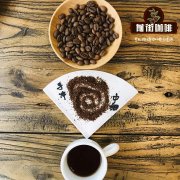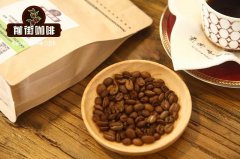New Oriental is no longer just a culinary college. Let's take a look at their coffee beans.

Professional coffee knowledge exchange more coffee bean information please follow the coffee workshop (Wechat official account cafe_style)
The Guatemalan Coffee Association established the Guatemalan coffee brand and defined coffee from eight different origins under the slogan "one Rainbow Choice (A Rainbow of Choices)". Eight regions are divided into Antigua producing area (Antigua Classic), Vivette Nanguo producing area (Huehuetenango), Koban Rainforest producing area (Rainforest Coban), Attilan producing area (Traditional Atitlan), Farahannis Plain producing area (Fraijanes Plateau), San Marco producing area (Volcanic San Marcos), Akatian Fruit producing area (Acatenango) and New Oriental producing area (New Oriente).
New Oriental is the youngest coffee producing area in Guatemala. Rain Water is abundant here, under the shade of clouds for many years, the climate is similar to the producing area of Koban rainforest. In ancient times, it was a volcanic area, where the soil was made up of metamorphic rocks, so it was rich in minerals. The New Oriental District used to be the poorest area in Guatemala before it began to grow coffee. Since the 1950s, farmers in the mountains have started growing coffee on the natural, nutritious land here. Gradually, it has become a rising star in the Guatemalan coffee industry.
Altitude: 1300-1700 m harvest time: December-March the coffee in this area has been grown entirely by small farmers since the 1950s, and now every farmer in the mountain area is a coffee production unit. This area, once the most remote and poorest part of Guatemala, is now alive and well. Rainy, cloudy, New Oriental ancient times is a volcanic area, soil volcanic metamorphic rock evolved, rich in minerals, balanced nutrition, different from other volcanic coffee producing areas.
[features] the palate is well-balanced, mellow and full-bodied, with chocolate flavor.
Country: Guatemala production area: new Oriental Manor: Cadilas Manor Grade: SHB treatment: wine tanning treatment Variety: Pacas altitude: 1675 meters Flavor: passion Fruit, Strawberry Sandwich Cake, Blueberry Guatemala Guatemala this country has a lot of volcanoes, and the coffee produced under the volcanic soil is rich in taste, and the average altitude in Guatemala is very high. High altitude means that the temperature difference between day and night in the environment where coffee trees grow will be relatively large. This harsh environment makes coffee fruits grow longer and slower on coffee trees. Beans are hard beans, but the flavor is more complete and richer.
The rich volcanic soil of the New Oriental, low humidity, plenty of sunshine and cool nights are the characteristics of this producing area. The valley is surrounded by three volcanoes: Agua, Fuego and Acatenango. Volcanic ash from the eruption makes the soil of Antigua rich in minerals. Volcanic pumice can maintain humidity and overcome the lack of rainfall in Antigua; dense tree shade protects against occasional frosts.
[features] it is rich in damp fragrance, good balance, high sweetness and elegant taste.
Wine sun flavor: pineapple, cantaloupe, dried apricot, sugared lemon peel, Bordeaux wine, green tea and cinnamon spices, full of sweetness and smoked plum aromas.
Qianjie suggested baking Qianjie coffee [Guatemala guava Plain] as an example, this is a bean treated with SL28+ honey, the baker's first idea is: sour and sweet! Guatemala high-altitude coffee beans have high hardness, honey-treated coffee beans also give coffee beans hard beans. Through the first batch of baking, it is found that the bean absorbs heat slowly during the dehydration period, and the slow heating up leads to a baking flavor when the baking time is too long.
So the baker changed his way of thinking and used the roasting method of fast baking during the dehydration period, prolonging the yellowing point Mena reaction time and explosive development time to ripen the coffee. This kind of baking was carried out for 2 heats, and the cup was measured and compared after 8 hours.
Curve A, curve B is the baking curve of rapid elongation development of two big fires. The yellowing points of furnace An and furnace B are 5`30 and 4`50 respectively, while the first explosion point is 185℃ / 8`40 and 187℃ / 8`36, the lower bean temperature and development time are 196 ℃ / 1`50 and 198 ℃ / 2`00, respectively. According to the analysis of the baking curve, the coffee in oven B gives more energy in the early stage, and has a longer flavor development time, and it can be predicted that the flavor of enzyme and caramelization will be better than that of oven A. So does the cup test really reflect the baking results?
The cup test results are as follows: an oven | baked peanuts, almonds, cocoa, caramel, grapefruit, cream.
Stove B | Flowers, toffees, almonds, cocoa, cinnamon, plums, jackfruit, with a hint of cut tobacco brewing in Guatemalan volcanic soil.
Other: B oven coffee is better in sour and sweet amplitude, high sweetness, long aftertaste, strong back sweet.
Roaster: Yangjia 600g, bean dosage 300g, baking room temperature 28 ℃, humidity 50%.
The baker uses low temperature to enter the beans. After 30 seconds, the firepower is opened to 160. the throttle is 3, and the temperature is set at 101℃. When the ℃ throttle is opened to 4 at the turning point, there will be a slight increase in temperature due to the release of water vapor in this minute. From the first explosion temperature of the first two furnaces, it is estimated that the explosion point is about 185℃, and we reduce the firepower to 100 10 ℃ in advance to slow down the temperature rise, laying the groundwork for prolonging the development time of the first explosion. An explosion of 187℃, development of 11 ℃, takes 2 minutes, and the sound of explosion will be heard in an orderly manner.
Important Notice :
前街咖啡 FrontStreet Coffee has moved to new addredd:
FrontStreet Coffee Address: 315,Donghua East Road,GuangZhou
Tel:020 38364473
- Prev

Geisha rose| Flint Estate, Volcan, Panama|
Professional coffee knowledge exchange More coffee bean information Please pay attention to coffee workshop (Weixin Official Accounts cafe_style) Panama Volken production area Firestone Manor| Geisha rose summer, kaduai seed honey treatment sun drying treatment flavor? The fame of Firestone Manor has to mention an important person Graciano Cruz. Graciano Cruz's status may be familiar to you, as
- Next

I wonder if the beans from Joy Manor will really make people happy?
Professional coffee knowledge exchange more coffee bean information please follow the coffee workshop (Wechat official account cafe_style) Nicaragua Mierisch El Placeres Red Pacamara Washed to share with you a refreshing Nicaraguan coffee sugar beans (after reading this sentence is a summary of XD) the following are some baking details can provide some reference names for roasting: Nicaragua
Related
- Does Rose Summer choose Blue, Green or Red? Detailed explanation of Rose Summer Coffee plots and Classification in Panamanian Jade Manor
- What is the difference between the origin, producing area, processing plant, cooperative and manor of coffee beans?
- How fine does the espresso powder fit? how to grind the espresso?
- Sca coffee roasting degree color card coffee roasting degree 8 roasting color values what do you mean?
- The practice of lattes: how to make lattes at home
- Introduction to Indonesian Fine Coffee beans-- Java Coffee producing area of Indonesian Arabica Coffee
- How much will the flavor of light and medium roasted rose summer be expressed? What baking level is rose summer suitable for?
- Introduction to the characteristics of washing, sun-drying or wet-planing coffee commonly used in Mantenin, Indonesia
- Price characteristics of Arabica Coffee Bean Starbucks introduction to Manning Coffee Bean Taste producing area Variety Manor
- What is the authentic Yega flavor? What are the flavor characteristics of the really excellent Yejasuffi coffee beans?

